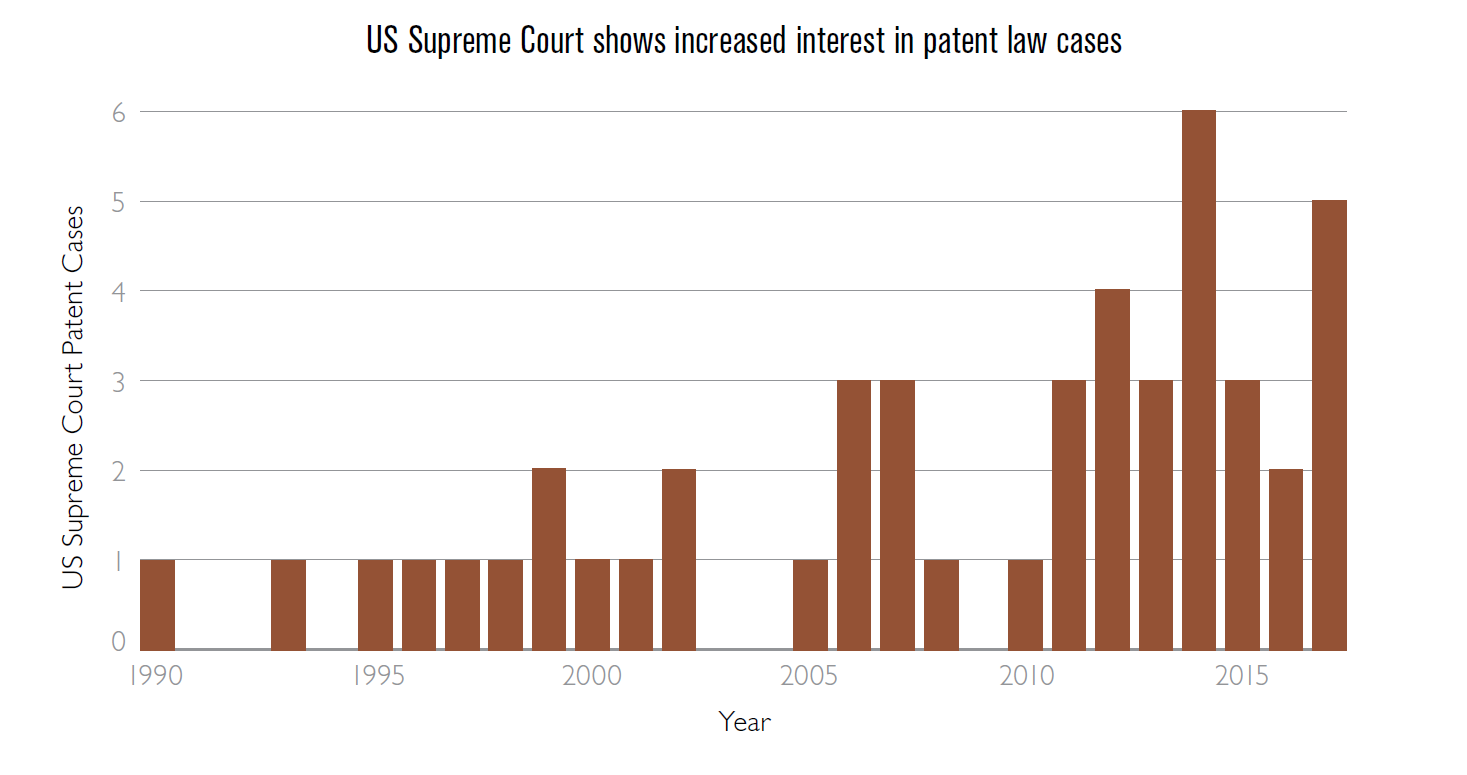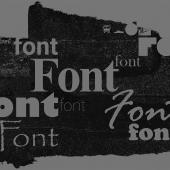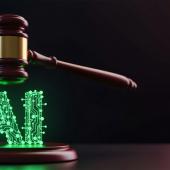
Over the past several years, using patents to protect innovation has become increasingly complicated as technology itself has exploded in sophistication and complexity. This is especially true in the realm of software. In the United States, patents are currently being used as both swords and shields in attacks on software innovation.* This dynamic tension is most evident in the context of so-called patent assertion entities (PAEs) or nonpracticing entities (NPEs), otherwise known in the geek community as “patent trolls.” They typically buy bundles of patents from inactive companies or smaller patent holders with the hope that they will be able, like the trolls in fairy tales, to charge anyone who dares to try to cross their “bridge” a license fee or “toll” to allow them to pass.
*This column is not intended for IP lawyers, who know this subject better than I do. It is also primarily about the US patent situation even though the principles have implications worldwide. Finally, it is focused on software, not hardware, but many of the same concerns pertain.
Patent trolls will identify patents that they think arguably (but often tenuously) cover some widely used software. They then contend via a demand letter that the software users owe them a license fee.
These statistics show the magnitude of the problem:
- The growth rate of litigation by PAEs is 20 percent a year;
- Eighty-four percent of all high-tech patent lawsuits are filed by PAEs;
- Less than one percent of defendants in these suits are found liable;
- The average cost of defending a PAE lawsuit is more than US$3.2 million, and 87 percent of all defendants choose to settle before trial; and
- More than 10,000 companies have been sued by a PAE at least once.
The following example illustrates how they operate. Martin Kelly Jones, a former tennis player with no engineering or other technology background, somehow managed to obtain a patent on any online transit tracking software system. Jones formed a PAE called Shipping & Transit (formerly known as ArrivalStar) solely to assert this patent. For a while, he focused on demanding license fees from bus and other public transit companies, but recently Shipping & Transit has taken the position that anyone who even sends someone an email notification that a shipment will be arriving owes it a licensing fee.
FedEx and UPS have each paid a license fee to ArrivalStar (presumably just to avoid litigation expense), but Shipping & Transit has since threatened to sue hundreds of online sellers who simply send customers an email notification that their purchase has shipped. And Shipping & Transit has been smart enough to set its license fee at US$25,000 to US$45,000, well under what it would cost the seller to defend a patent suit. Many IP lawyers believe that Shipping & Transit’s patent claims would not survive a vigorous legal challenge, but because Shipping & Transit has a history of quickly dropping its suits against those who are bold enough to defy them, it is hard as a defendant to know whether it is truly worth fighting them.
So are all PAEs equivalent to gangsters in the old protection racket? Many small inventors, who have legitimate patents on legitimate inventions, don’t have the money to prosecute patent infringement suits, which can cost millions. Many PAEs claim that they are actually helping these inventors by buying or licensing their patents and then prosecuting those infringement suits.
One of these, Intellectual Ventures (IV), has become famous (or infamous, depending on your perspective). It owns more than 30,000 patents, and they are in the business of aggressively either licensing or prosecuting infringement actions against anyone who arguably infringes one of their patents.
Its founder portrays what IV does as altruistic, claiming that, “in the US, a disregard for patents is deeply ingrained in parts of certain industries … most notably software, computing, and other internet-related sectors. These ‘winner takes most’ industries impose extreme competitive pressure on young firms to increase their market share by any means necessary, even copying the ideas of others.” But others believe IV is “the biggest patent troll of all.”
In my opinion, the problem is not so much with the concept of PAEs but with a US patent system that enables some PAEs to abuse and misuse the situation.
The US patent system is the result of a complex, dynamic and often ambiguous interaction between the US Patent and Trademark Office, federal courts, Congress, special interest groups, universities, attorneys, investors, foreign and domestic corporations, and many others. In recent history, the system has evolved because of: (1) legislation passed by Congress; (2) rapidly changing patent office rules, policies, initiatives, and programs; (3) new court opinions; (4) litigants and patent owners continuously trying novel patent strategies; and (5) lobbying by interest groups.
For many years, the Eastern District of Texas was virtually every PAE’s preferred venue for patent lawsuits. It developed a reputation for having pro-plaintiff judges and “rocket dockets” that ensured speedy trials. As a result, many PAEs established headquarters in East Texas and patent assertion emerged as a booming business. (Apple recently closed its two stores in East Texas just to try to avoid that jurisdiction.) In the first quarter of 2017, more patent cases were filed in the Eastern District of Texas (33 percent) than in any other US jurisdiction.

Since patent law was sufficiently arcane to quite properly be considered a specialty, CAFC was established in 1982 to handle all patent appeals. But CAFC kept expanding what it considered to be patentable subject matter. Its State Street decision was especially problematic for technology innovators because it massively expanded what was considered patentable software. This happened at a point when the software world was exploding with different kinds of software applications. At the time, software engineers almost never thought to document their software in the very few places where patent examiners looked for prior art: mainly, other patent applications and scientific journals. Thus, canny (and unscrupulous) people could file and obtain patents for software that had been developed by others long before.
For a long time, the Supreme Court chose not to weigh in. But as shown in the following graph, in recent years the Supreme Court has been much more vigorous in its attempts to address some of these problems.
In May 2017, the Supreme Court’s TC Heartland ruling restricted where companies were allowed to file patent cases, which has dramatically reduced the number of patent lawsuits filed in East Texas.
And five years ago, the Supreme Court’s decision in Alice v. CLS Bank ruled that an abstract idea does not become eligible for a patent simply because it has been implemented via software on a generic computer. In the wake of that ruling, huge numbers of broad, generic software patents became invalid, dealing a blow to many patent trolls. Counting both federal courts and the Patent Trial and Appeal Board, more than 400 decisions have found patent claims invalid under Alice. These include rulings invalidating patents on playing bingo on a computer, computerized meal plans, updating games, and many more. Some of these patents had been asserted by patent trolls dozens or even hundreds of times. A single ruling threw out 168 cases where a troll claimed that companies infringed a patent on the idea of storing and labeling information.
This has been, in my opinion, a tremendous improvement. But there are too many players who believe that the Supreme Court has either gone too far or not far enough.
For example, the CAFC itself has not been happy with Alice, and in a 2016 ruling called Enfish v. Microsoft, relied on a single sentence from Alice to develop a new legal foundation for approving even more software patents. This legal theory, known as the “technical effects doctrine,” holds that software that “improves the functioning of a computer” should be eligible for a patent. This standard seems ambiguous enough to cover nearly anything.
Congress is getting into the act too. Just this year, different constituencies have proposed legislation that would either greatly limit or expand patent litigation.
The patent saga is likely to continue and become ever more complex because technology is moving so quickly and has become so valuable. Big companies can afford to navigate this mess because they have the money to file myriads of patents and defend themselves against infringement suits. But not having clearly delineated patent laws makes it very difficult for smaller companies to know how to navigate the system, especially in the context of software.
Since the US Constitution* established patents in order to favor innovation, it seems to me that we need to develop a more sensible approach to software patents. Whether we will or not is anybody’s guess.
*Article I, section 8, it reads, “Congress shall have power … to promote the progress of science and useful arts, by securing for limited times to authors and inventors the exclusive right to their respective writings and discoveries.”
Further Reading
State Street Bank and Trust Company v. Signature Financial Group, Inc., 149 F.3d 1368 (Fed. Cir. 1998)




